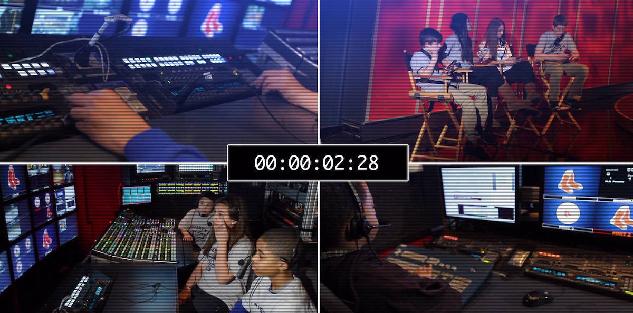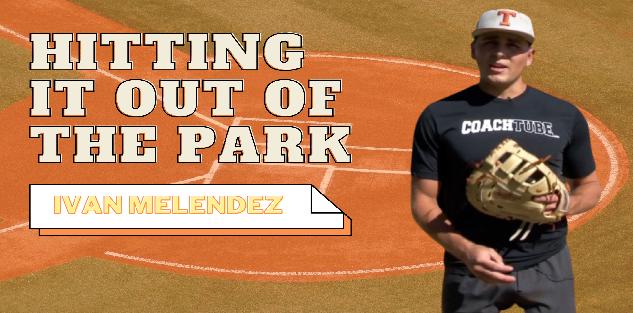Featured courses
- Understanding The Shift by Brandon Ogle
- Two Drills to Improve Outfield Movement and Communication by Grant Young
- The Ultimate Resource For Coaching Youth Baseball by Jackson Chlebowy
- Become a Master at Bunting by Brandon Ogle
- 5 Reasons Why There Is More To Good Base Running Than Just Speed by Brandon Ogle
- Three Injury-Prevention Tips For Your Offseason Pitching Program by Grant Young
- How to Teach Hitting to the Next Generation by Grant Young
- Developing Defensive-Minded Baseball Catchers by Grant Young
- 3 Baserunning Tips to Score More Runs in Baseball by Grant Young
- 5 Outfield Drills to Work on in Season by Alec Burris
- Keys For Scoring More With Runners on First and Third Base by Grant Young
- How to Develop Your Game to Become a Five-Tool Player by Brandon Ogle
- 3 Coaches Share the Keys to Running Baseball Practice the Right Way by Grant Young
- Four Drills to Sharpen a Baseball Hitter’s Vision at the Plate by Grant Young
- Four Quotes to Hit Better With Two-Strikes by Grant Young
- Four of Former MLB Pitcher Juan Nieves’ Movement-Based Pitching Drills by Grant Young
- Two Tips For Developing an Elite Baseball Bullpen by Grant Young
- Overcoming the Four Challenges of Indoor Baseball Practices Because of Weather by Grant Young
- Three Tips to Make Your Baseball Team Mentally Tougher by Grant Young
- Three Priceless Philosophies to Motivate Your Baseball Team by Grant Young
- Three Offseason Baseball Drills to Simulate Competition by Grant Young
- Three Baseball Offseason Strength and Conditioning Essentials by Grant Young
- Important Ways to Improve Your Baseball Team’s Baserunning by Grant Young
- Three Ways to Perfect Hitting Mechanics From an MLB Icon by Grant Young
- Catchers can influence pitchers...for bad or good by Drew Johnson
- Throwing Strikes and Playing Good Defense Equals Wins by Jose Ortiz
- Legendary Indiana Head Baseball Coach Bob Morgan’s Offensive Theory by Grant Young
- Tennessee Head Baseball Coach Tony Vitello on How to Practice Baserunning by Grant Young
- Three Great T-Ball Drills For Youth Baseball Players by Grant Young
- How to Manage a Baseball Pitching Staff by Grant Young
- Three Uncommon Tips to Become a Better Hitter by Grant Young
- How a Baseball Coach Can Develop Strike Throwers by Grant Young
- Drills to Develop Elite Baseball Outfielders by Grant Young
- Baseball Training Exercises to Strengthen Arm and Bat Speed by Grant Young
- How to Use Bunting to Score More Runs by Grant Young
- How To Build An Elite Baseball Infielder by Grant Young
- Three Drills to Improve Your Baseball Team's Infield Play by Grant Young
- Three Keys to Curating a Pitching Staff’s Success by Grant Young
- 3 Techniques to Develop a Baseball Player’s Hitting Approach by Grant Young
- How to Cultivate Confidence Within Your Pitchers by Grant Young
- 5 Every Day Drills To Help You Become A Better Catcher by tyler Linderman
- How to Throw A Curveball by Brandon Ogle
- How to Assemble a Lock-Down Bullpen by Brandon Ogle
- How to Throw a Sinker by Brandon Ogle
- How to be a Smart Baserunner by Brandon Ogle
- Improving a player's slugging average by Phillip Woolgar
- The 8 Fundamentals of Pitching by Drew Johnson
- How to Throw a Deceiving Changeup by Brandon Ogle
- Step Up Your Outfield Defense With These Three Drills by Jose Ortiz
- 8 Baseball Drills Every Player Should Practice by Drew Johnson
- How To Become An Elite Defensive Outfielder by Tyler Linderman
- 5 Tips For Crushing A Curveball by Johnny Grassi
- LEGENDS FOR YOUTH INCLUSION BASEBALL CLINIC by Phil
- Fourteen Ways To Turn A .300 Hitter Into A .210 Hitter by Jay P. Granat, Ph.D.
- How To Become The Ideal Leadoff Man by Brandon Ogle

How to Throw a Deceiving Changeup
- By Brandon Ogle
As a pitcher, one of your key responsibilities is to make the hitter feel uncomfortable at the plate. They shouldn’t step up there with the feeling that they can easily get a base hit. One way to achieve this is to work both sides of the plate. Another method is to utilize a variety of pitches. Possessing speed on your fastball is nice, but it is even better when matched with reliable off-speed pitches. These are what force a hitter to start guessing.
• The Purposepose
For years, the changeup has been one of the predominant off-speed weapons for pitchers. It should be thrown to look like a fastball, but actually come in slower as it approaches the plate. The key concept behind this is deception. In doing so, the hitter’s timing will be disrupted. As for the speed difference between the changeup and fastball, the changeup should be approximately 10-15 miles per hour slower than the fastball. While the purpose is to keep hitters off-balance, pitchers throw it in varying frequencies. Some pitchers rely heavily on it, while others will toss it out there at a 15% clip just to surprise hitters. It is entirely up to you when it comes to how comfortable you feel throwing it.
• The Grip rip
As with many pitches, there has been adaptation on how the changeup is thrown. Pitchers have consistently tinkered with the grip to something that they feel comfortable with. For beginners, I recommend using the 3-Finger Changeup. This is also best suited for younger pitchers, as it works well with individuals with smaller hands. The grip for this starts with the middle three fingers (ring, middle, and index) being placed on the top of the baseball. Then, your thumb and pinky should be directly underneath the baseball on the smooth leather. To get a better idea of how it should feel, the thumb and pinky should touch each other.
For more advanced pitchers, it might be time to try the circle changeup. Simply put, you’ll want to make a circle with your index finger and thumb. Once you have that set, then center the ball between the final three fingers and place it comfortably against the circle. The images below provide a nice example of how the circle change should look in your hands.
• The Releaseease
While the release should mimic that of a fastball, there are some slight differences that pitchers should be aware of. On the topic of similarities, you’ll want to throw it with the same arm speed. First off in terms of differences, the grip should be slightly looser. Due to the changes in finger placement, you won’t be holding the ball as tight as you do with a four-seam or two-seam fastball. The second change is to pronate your grip slightly. Doing so will allow you to get more downward spin on the ball. Each of these modifications can come quickly through practice, especially if you’re already comfortable with fastball grips. The key to remember when practicing it though is to make it look like a fastball. The hitter should think a fastball is coming until all of a sudden it slows down, thus totally surprising the batter.
Here we see former Indiana Head Coach Bob Morgan explain the importance of understanding the spin of each of your pitches.
Source: Pitching Fundamentals: Drills, Techniques, and Tips.
• Working in Unison with a Fastballball
While any pitcher can throw a changeup effectively, it is most dominant when thrown in unison with a fastball. Pitchers like Stephen Strasburg and David Price, who possess elite fastballs, constantly keep hitters off-balance when they throw a changeup after an upper-90’s fastball. The contrast between the two pitches makes it so hard for a hitter to guess what the next pitch will be. Another area where this duo proves effective is the speed between the two. The faster someone throws a fastball, the greater the chances there will be of a significant difference between it and the changeup.
• Keep It DownDown
Rarely do pitchers attempt to aim higher in the zone with a changeup. It is just not a recipe for success. This is because if hitters are able to connect on it cleanly, you’re looking at an extra base knock or even a homerun. That is why I continuously urge young pitchers to aim low in the zone with a changeup. You might have to adjust your release point slightly to achieve this, but it is more than worth your time to work on.
• Number 1 Errorrror
The number one error with throwing a changeup is leaving it hanging and failing to provide deception. If hitters can tell it’s just a slow fastball without any movement, then chances are they’ll jump all over it. When one hitter or coach notices a way to tell what pitches are coming, word will spread throughout the dugout. It won’t take long for the game to start looking like batting practice. Most of the errors can be fixed through practice.
• Best Changeups in the MLB MLB
As I’ve mentioned before, there are many pitchers that rely on their changeups heavily in the MLB. Some have even perfected it so much that they throw it over 30% of the time. Here are a few that continue to baffle hitters time and time again:
-Pedro Martinez – In terms of dominance on the mound, Pedro’s resume speaks for itself. From 3 Cy Young Awards to 8 All Star nods, he is considered to be one of the best of all-time. One of the factors behind this success was deception. All of his pitches looked the same coming out of his hand, but the decrease in speed of the changeup consistently forced swing-and-misses.
-Eric Gagne – Considered by many to be one of the best closers of his time, Gagne was a staple at the back end of the Los Angeles Dodgers’ pen. The 2003 Cy Young Award winner also liked to turn to his changeup frequently. To set up the changeup, he liked to establish his fastball first. The unique aspect of Gagne’s changeup was that he didn’t use the standard grip, but rather worked with a Vulcan changeup. The reason why he chose to use this was due to the movement it exhibited.
Practice It, Perfect It, Use Ite It
Simply put, every pitcher should have a changeup, in one form or another, in their pitching arsenal. It is too valuable of a weapon to keep hitters off-balance. As for younger pitchers, I recommend working with the three-finger grip initially. This will still exhibit the primary purpose of a changeup and be easier to throw with smaller hands. The frequency you throw it is dependent on how comfortable you feel with it, but consistently work on throwing it some.



